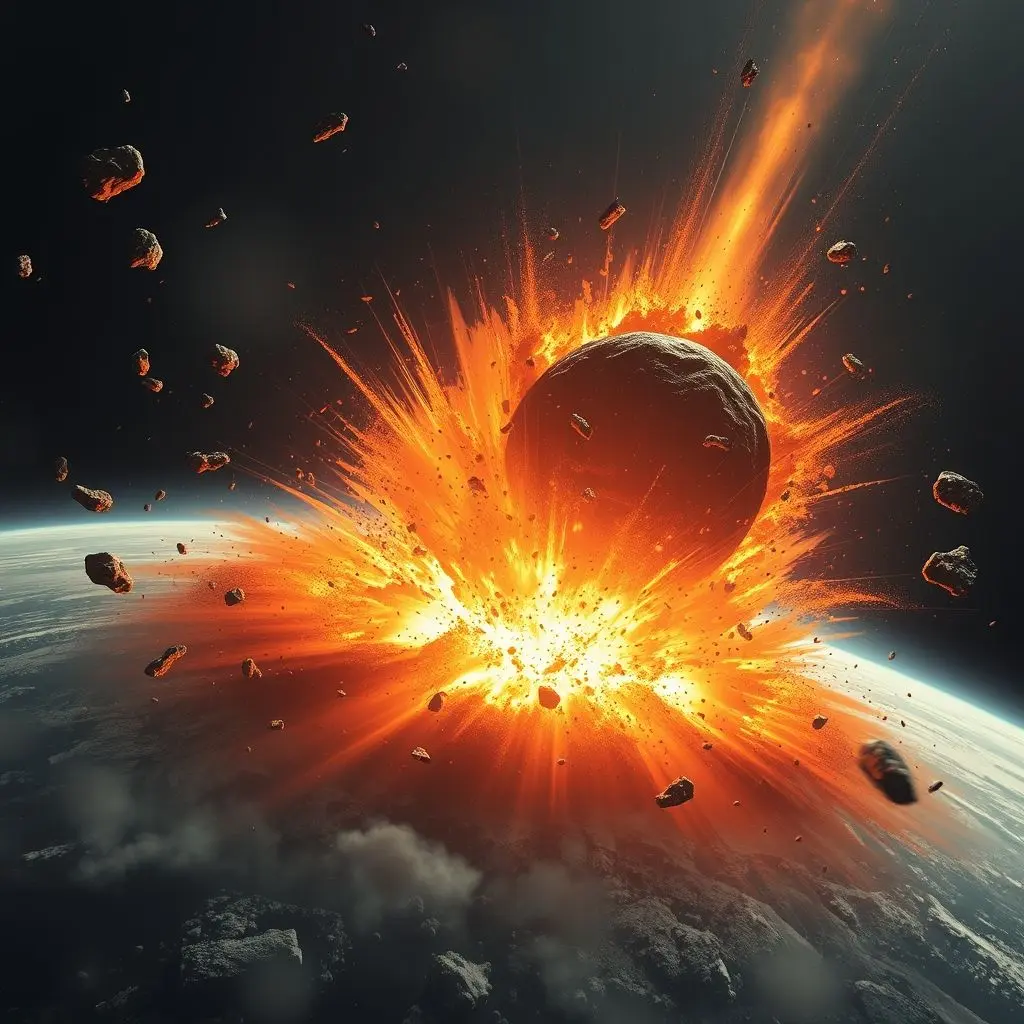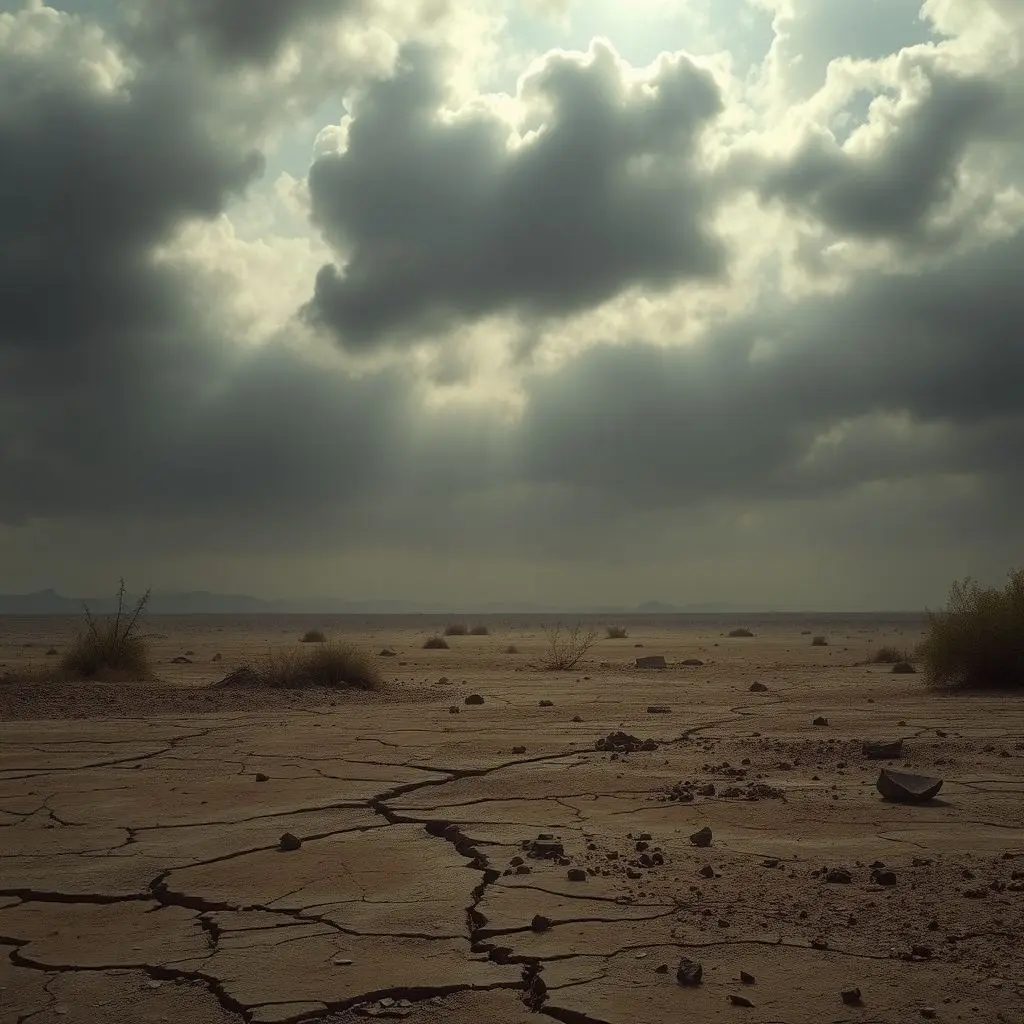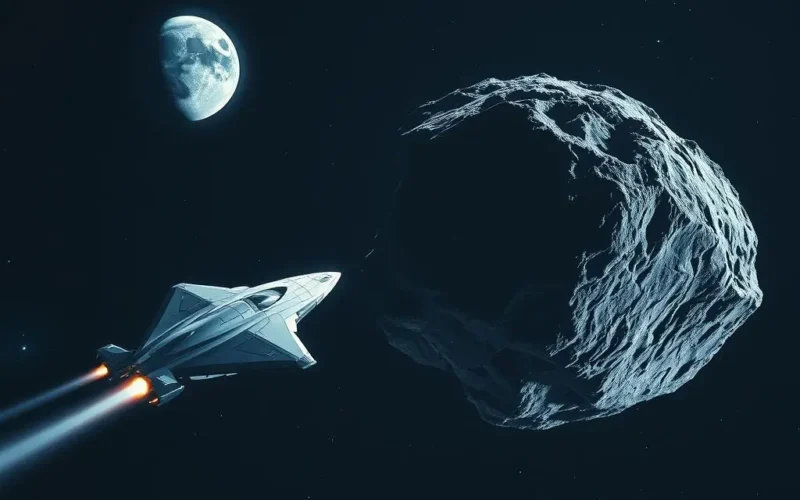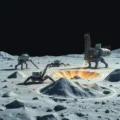Imagine the scene: the world watches as a massive asteroid hurtles towards Earth. Our scientists have deployed the cutting-edge deflection technology, the product of decades of ingenuity and billions invested. We hold our breath, waiting for the cosmic billiard ball to gently change course… but it doesn’t. The nudge fails. The rock keeps coming. What happens next?
It’s a scenario plucked straight from a sci-fi thriller, but the potential reality is why humanity is investing heavily in planetary defense. While the focus is often on the promise of technology to save us, it’s equally crucial to consider the chilling ‘what if’ – the scenario where our best efforts fall short. What are the actual stakes if our high-tech shield proves permeable?
We recently touched upon this possibility in a brief visual exploration:
But the details go far beyond a few striking images. The consequences of a failed deflection aren’t uniform; they depend entirely on the nature of the incoming threat. Let’s delve deeper into the potential outcomes.
Table of Contents
Understanding the Threat: Not All Space Rocks Are Equal
First, a quick primer. Asteroids vary wildly in size, composition, speed, and trajectory. The impact they cause, or the damage from an atmospheric explosion (an airburst), correlates directly to these factors, especially size.
- Small Objects (meters to tens of meters): These are frequent visitors. Most burn up harmlessly in the atmosphere. If one makes it through, it might create a bright fireball and scatter meteorites. Damage is minimal, usually just a few broken windows or a small crater if it’s slightly larger.
- Medium Objects (tens of meters to ~1 km): This is where things get serious on a regional scale. A Tunguska-sized event (~50-60 meters) could flatten forests or devastate a city with an airburst if it happened over a populated area. A slightly larger one could cause a significant impact crater and localized destruction.
- Large Objects (> 1 km): These have global consequences. An impact from an object over a kilometer wide could eject enough dust and debris into the atmosphere to cause long-term climate change, potentially triggering mass extinctions. The dinosaur-killing asteroid was estimated to be around 10-15 km across.
Planetary defense efforts, including deflection tech, are primarily focused on the larger objects – those that pose a threat to civilization or even life on Earth as we know it. Smaller objects are often too numerous, detected too late, or simply don’t warrant the immense effort required for deflection.
The Failure Scenario: Why Deflection Might Not Work
When we talk about deflection technology failing, we’re not just talking about a single method like a kinetic impactor (like NASA’s DART mission). Failure could mean several things:
- Late Detection: We simply don’t see it coming with enough lead time to execute a deflection mission. Current efforts are focused on finding near-Earth objects (NEOs), but not all are tracked.
- Technological Malfunction: The spacecraft fails, the nuclear option (if ever used) doesn’t detonate correctly, the gravity tractor doesn’t stabilize – technology is complex and can break.
- Insufficient Force: Our ‘nudge’ wasn’t strong enough, or the asteroid’s mass or composition made it resistant to the planned method.
- Incorrect Trajectory Calculation: We miscalculated the effect of our intervention, and the asteroid is still on a collision course.
- Asteroid Characteristics: The asteroid might be a rubble pile that breaks apart rather than deflecting as a single unit, creating multiple impactors.
If any of these scenarios occur, and a hazardous asteroid remains on track for Earth, the consequences unfold based on its size and where it hits.

Consequences: Size Really Does Matter When Deflection Fails
The Local (But Still Catastrophic) Event
If a smaller object (tens of meters to maybe 100-200 meters) is on course and deflection fails, the result is a severe regional disaster rather than a global one. An airburst high in the atmosphere could generate a powerful shockwave, equivalent to many megatons of TNT, flattening everything below it for miles. If it impacts solid ground or water, it creates a significant crater, triggers earthquakes, and potentially massive tsunamis if it hits an ocean.
Picture a city or a populated region being wiped out in an instant. Infrastructure destroyed, massive loss of life, ecological devastation in the immediate vicinity. This isn’t an extinction event, but it would be a tragedy of unprecedented scale for the affected area and a major humanitarian crisis globally.
The Global Cataclysm Scenario
This is the scenario planetary defense aims most urgently to prevent. If a large asteroid (>1 km) impactor is inbound and our deflection fails, the world faces a true existential threat. The immediate impact is unimaginably violent:
- Massive Explosion: Energy release equivalent to millions of megatons of TNT.
- Crater Formation: A crater many kilometers wide, blasting immense amounts of rock into the atmosphere and space.
- Shockwaves and Earthquakes: Tremendous ground shaking felt across the globe.
- Firestorms: Ejected material re-entering the atmosphere could cause widespread atmospheric heating and ignite global firestorms, incinerating large areas and filling the sky with soot.
- Megatsunamis: If the impact is in the ocean, colossal waves could inundate coastal regions worldwide.
Beyond the immediate devastation, the long-term effects are equally terrifying:
- Dust and Soot Veil: The atmosphere becomes choked with fine particles, blocking sunlight for months or even years.
- Impact Winter: Reduced sunlight causes global temperatures to plummet, leading to widespread crop failure and the collapse of ecosystems.
- Acid Rain: Vaporized rock and atmospheric gases can create highly acidic rain, further damaging ecosystems and infrastructure.
- Ozone Depletion: Chemical reactions in the atmosphere could destroy the ozone layer, exposing the surface to harmful UV radiation once the dust settles.
This cascade of effects would dismantle civilization. Agriculture would cease in many areas, supply chains would collapse, and existing societal structures would likely crumble under the weight of starvation, disease, and conflict over scarce resources. It’s the ultimate cosmic reset button, potentially leading to the extinction of a vast percentage of species, including, potentially, humanity.

Beyond the Immediate: Surviving the Aftermath
If humanity were to survive such a global catastrophe, the challenge wouldn’t end with the impact. The ‘Aftermath’ would be a drastically altered world. Those who endure the initial event would face a struggle for survival in a harsh, dark, and cold environment. Access to food, clean water, and breathable air would be critical challenges.
Adaptation would become the watchword. Could pockets of humanity survive in hardened shelters? Could new ways of farming under reduced sunlight be developed? Could we tap into geothermal energy or other shielded power sources? Would knowledge and technology be preserved and passed down to future generations attempting to rebuild?

The idea of ‘cosmic survival guides’ isn’t just about dodging the rock; it’s fundamentally about human resilience and the capacity to adapt to unimaginable circumstances. Planning for such a scenario, however grim, forces us to think about long-term survival, food security, preserving knowledge, and maintaining social cohesion in the face of ultimate adversity.
Planning for the Unthinkable: More Than Just Tech
The potential failure of deflection technology underscores a vital point: while technology is our first line of defense, it cannot be the only one. A comprehensive planetary defense strategy must also include:
- Improved Detection and Tracking: Finding hazardous objects as early as possible is paramount.
- Multiple Deflection Options: Relying on just one method is risky. Research into kinetic impactors, gravity tractors, ablations, etc., needs to continue.
- Mitigation Planning: For smaller objects or scenarios where deflection isn’t feasible, planning for evacuation and disaster response is necessary.
- Survival and Adaptation Strategies: Research into resilient infrastructure, food production in challenging environments, and preservation of critical information.
Thinking about deflection failure isn’t being pessimistic; it’s being prepared. It’s acknowledging that even with incredible technology, the universe is vast and unpredictable. Planning for the worst-case scenario isn’t science fiction; it’s just good sense for a species living on a planet in a cosmic shooting gallery.

Frequently Asked Questions About Asteroid Impacts and Deflection
Q: How likely is a civilization-ending asteroid impact?
A: While smaller objects hit Earth relatively frequently, impacts large enough to cause global catastrophe (like the one that killed the dinosaurs) are extremely rare events, occurring on timescales of millions of years. However, the consequences are so severe that even a low probability warrants significant preparedness efforts.
Q: What asteroid deflection technologies are currently being developed or tested?
A: The most mature concept is the kinetic impactor, demonstrated by NASA’s DART mission, which successfully altered the orbit of a small moonlet asteroid. Other concepts include gravity tractors (using a spacecraft’s mass to gently pull the asteroid), ablations (using lasers or concentrated sunlight to vaporize material and create thrust), and, controversially, nuclear options for rapid energy transfer.
Q: Could we really stop ANY asteroid, no matter the size or speed?
A: Our current capabilities and planned technologies are most effective against medium-sized asteroids (< 1 km) or potentially larger ones IF detected many years or decades in advance. Very large asteroids or those detected with only months to spare would be incredibly challenging, perhaps impossible, to deflect with existing or near-future tech. This is why early detection is so vital.
Q: What would happen if an asteroid hit the ocean?
A: An ocean impact would generate colossal tsunamis that could devastate coastal areas hundreds or thousands of miles away. For very large impacts, the sheer energy released could also cause massive amounts of water and seabed material to be ejected into the atmosphere, contributing to climate effects, similar to a land impact, though with some differences in the type of ejected material.
A Look Towards the Future
While the possibility of deflection failure is a sobering thought, it shouldn’t lead to despair. Instead, it serves as a powerful motivator. It highlights the necessity of a multi-faceted approach to planetary defense – one that combines advanced detection, diverse technological solutions, and critical thinking about resilience and survival. Our journey isn’t just about building clever machines; it’s also about cultivating the knowledge, adaptability, and spirit needed to face whatever cosmic challenges might come our way, ensuring that if the worst should ever happen, humanity is not only prepared to dodge but also equipped to endure and eventually thrive again.





